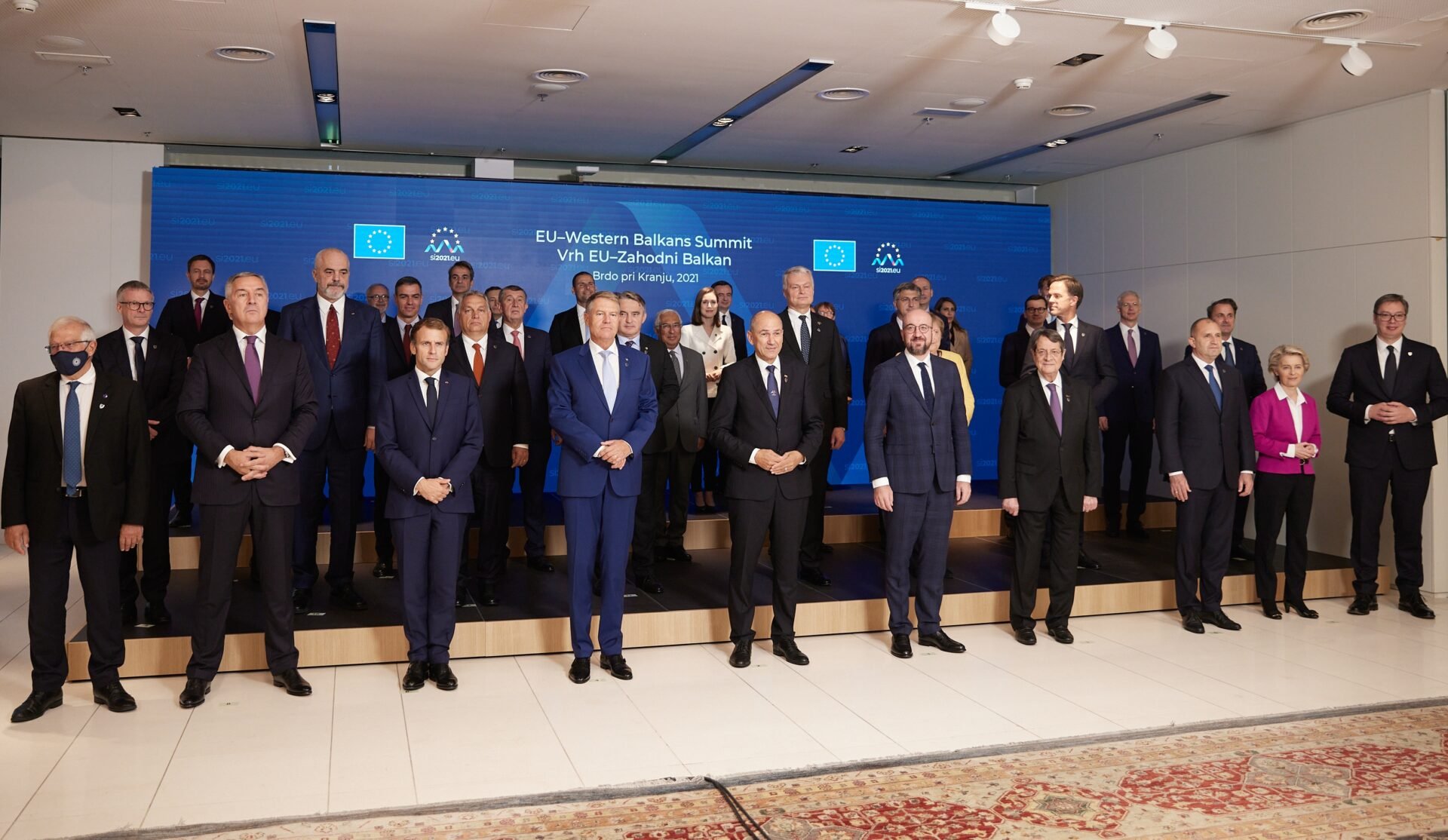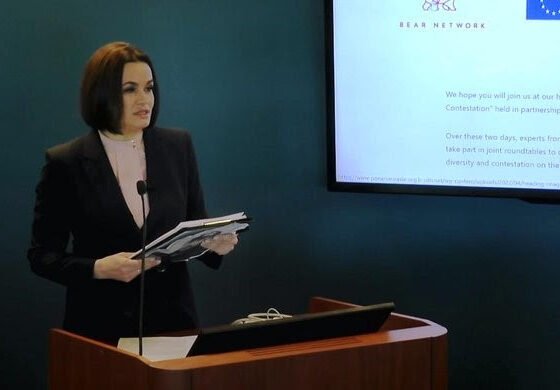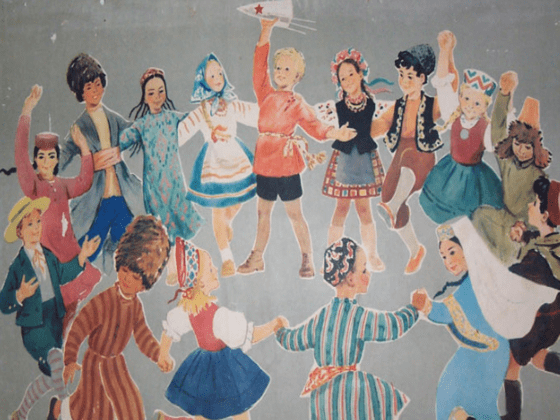Common threats unify. Unfortunately, the war on Ukraine had to happen to make clear what already should have been. As French President Emmanuel Macron explained, NATO went from being braindead in 2019 to being electroshocked in 2022. Its strategic role has been clarified. Similarly, despite all its differences, the EU’s cohesion and common foreign policy is coming together on Ukraine, as President Volodymyr Zelensky requests the country’s immediate membership.
There is another region geographically and culturally in Europe, if not politically attached to the EU. It is not far from Russia’s immediate neighborhood, where Moscow, along with its regional partners and organizations, persistently conducts hybrid war: the Western Balkans of Albania, Bosnia and Hercegovina, Kosovo, North Macedonia, Montenegro, and Serbia (the WB6). Their approach with the EU is supposed to be merit based in accordance with the so-called “regatta principle,” reinforcing their European perspectives as well as the EU’s enlargement process, a two-way corridor.
Russian aggression on Ukraine left no space for balancing between “East and West,” as one cannot balance values between right and blatant wrong. This is reflected on regional initiatives, which must be based on shared EU tenets and strengthening of the integration process while avoiding dubious alternatives, such as the present-day Open Balkan initiative might be.
Perspectives from the Dinaric Alps
In the past 30 years, Southeast Europe has experienced everything except stability and certainty, crucial elements for any kind of cooperation, growth, and sustainability. Not only that, but directly or indirectly, it has been constantly challenged with ideas and actions that might lead to further uncertainties. While many countries of the former Warsaw Pact are not only EU but NATO members, those in the Western Balkans are still stretched between Western merits and Russian (and Chinese) interference. For its part, Moscow will not easily give up the economic and social investments it has made in parts of the region.
Russian behavior in Ukraine is crucial to understanding the patterns of Russia and its proxies—Serbia and Republika Srpska—in the Balkans. The WB6 is constituted of countries with burdensome pasts. The only common denominator for each is their European perspective, even while Belgrade experiences pro-Russian demonstrations and declines to join sanctions against the Kremlin. Public polls indicate that the overwhelming majority of citizens of almost all of the countries are in favor of EU membership. It is not because of their deep knowledge of the structure, procedures, or EU institutions but because of what the EU symbolizes: freedom, prosperity, and stability.
With Russia’s attack, European integration has become the key to all possible solutions. It also means that all scenarios originate within the European perspective and end with EU membership. It is a road for each that leads from the values and standards to be embraced to the same values and standards to be implemented. Some might say that there are different routes to the same destination, but the Western Balkans and the EU now have the opportunity to move beyond their labyrinthian affairs. This region has had many dead ends so far.
In 1999, the EU tried the Stabilization and Association Process (SAP) as a framework for relations between the EU and the region. It was strengthened three years later at the Thessaloniki Summit by the endorsement of the so-called “regatta enlargement principle,” a merit-based approach by which each country’s performance would be a foundation for rewards for accomplishments. The concept can be understood as a “healthy rivalry” to bring the best out of each participant, thus pushing the whole region toward the desired (EU) destination. However, the last EU enlargement with Croatia in 2013 involved political infighting in Brussels as well as “enlargement fatigue” followed by major challenges such as the 2014 Ukraine crisis, ISIS, Brexit, refugee flows, and economic downturns.
Where Are We Today?
It may sound unrealistic, but there have been more than thirty regional initiatives within the Western Balkans, from large and long-lasting such as the Central European Initiative (CEI) to the recent ideas captured in the so-called Mini Schengen and its successor, Open Balkan. Because we are in the field of regional, multilateral affairs, it is assumed that the motivations need to be based on common interest—and that if EU membership is the common interest, alternatives or deviations are unacceptable. The countries’ common interests are reconciliation, security, legal and institutional upgrades (as a base for trust and cooperation), implementation of standards, and the reaching of benchmarks (allowing for consideration of membership). Clear goals and strong institutional structures endorsed by all in the WB6 reduce the space for ambiguity and possible manipulations.
While there are good interpersonal relations among the participating countries’ delegates, it is also the norm that the political interests in each capital are stronger than collective strategies. Unfortunately, there has been much internal politics reflected in all initiatives, as was the case with the Regional Cooperation Council (RCC) as the successor of the 1999 SAP (when Montenegro withdrew its elected candidate and Albania seized the situation).
The “Open Balkan” Initiative
In 2019, Serbia, North Macedonia, and Albania signed a declaration aiming to implement four EU freedoms—the free movement of capital, goods, services, and people—as a future base of their economic relations and prosperity. This was supposed to be implemented by 2021. The plan included the elimination of border controls, traveling without passports (only with ID cards), open employment in any of the participating states, mutual recognition of school diplomas, cooperation in fighting organized crime and corruption, and mutual aid in the case of natural disasters. This was known as the Mini Schengen project, which in the summer of last year grew to what today is known as Open Balkan. It is presented as a model of cooperation that will not be a substitute for EU membership but serves to accelerate it while facilitating economic growth in the region.
The same three countries signed three memoranda in July 2021 for more free movement of goods and labor and on natural disasters. As 2022 began, this agreement was enriched with four additional agreements: a connecting platform for electronic identification of citizens, conditions for a free labor market across the Balkans, cooperation in veterinary and food security, and the mutual recognition of company security certifications. The many agreements seem beneficial, but the only problem is that most if not all of them are already crafted in existing regional agreements and initiatives.
However, there is a need to be cautious, see through political rhetoric, and answer basic questions. It is not suitable to be skeptical and a priori negative toward profound initiatives, even those with catchy names such as the Open Balkan, but a lack of honesty and transparency have led the Balkans to suffer the most. How will the outcomes of EU integration reflect the interests of each participating state, especially having in mind the considerable statistical (economic, structural, political) differences among them? Will existing initiatives complement or overlap each other? What is the cost-benefit analysis for each state and for the region? What are the local costs, who will pay, and what will be the framework for checks and balances among leaders?
The EU Wheel’s Inertia
The Balkans has been a place where great powers are historically present, testing their supremacy. Russia has been asserting itself in the region for years. U.S. President Donald Trump was openly negative about Montenegro’s NATO membership (even though it joined during his administration). In Brussels, the Central European Free Trade Agreement (CEFTA) was introduced as an international agreement between the countries of Southeast Europe that was initially established in 1992 with Poland, Hungary, Czech Republic, and Slovakia. It was later expanded with Slovenia, Romania, Bulgaria, Croatia, and then joined by North Macedonia, Albania, Bosnia and Herzegovina, Moldova, Montenegro, Serbia, and Kosovo (by the United Nations Interim Administration Mission). The initiative was formed under the auspices of the EU and serves as preparation for full EU membership by establishing free trade areas with clear regulations. It proved its value. It allowed market expansion, equal free trade opportunities for all producers, investment policies, and most importantly, the creation of institutions that can sustain the process. CEFTA proved its purpose, preparing economies of participating countries for EU membership, and as of 2014 is integrated within the Berlin Process. All well planned, crafted, and executed.
The Berlin Process was announced as a new (four-year platform and later extended for its success) much-needed integration stimulus in 2014 by former German Chancellor Angela Merkel. Based on achievements to date and new realities, it offered new solutions. Its structured mechanisms work on the connectivity of WB6 countries in the areas of transport, energy, economics, and youth network building. New regional projects and initiatives emerged out of it such as the Regional Youth Cooperation Office (RYCO), Transport Connectivity, and the Regional Investment Reform (RIRIA).
With the support of the EU after the 2020 Sofia Summit, cooperation was elevated with the Action Plan on Common Regional Market (CRM), which stipulated freedom of movement of goods, services, capital, and people (so-called green corridors). It also covers regional investment spaces aiming to attract investors by harmonizing investment policies. Also included is integration with the European digital market based on harmonization with EU standards. The implementors are the existing regional mechanisms of the CEFTA and the RCC. The familiar aim is that economic cooperation within the WB6 makes EU integration simultaneously part of the same process. The ensuing Action Plan should provide recognition of industrial and agricultural certificates, acceptance of professional diplomas and qualifications, and licenses in the sphere of tourism and finance.
Challenges to Address
Quod ab initio vitiosum est non potest tractutemporis convalescere (What is wrong from the beginning cannot be validated by the passage of time). The WB6 states are in very different places when it comes to the EU negotiation process. While the smallest, Montenegro, a few years ago, opened all 35 chapters, Bosnia and Hercegovina has held the status as a potential candidate since the Thessaloniki Summit. Kosovo is still not recognized, not only by Serbia but even by some EU member states. All countries in between are at a standstill or moving slowly, and Chapters 23 and 24 (Corruption and Organized Crime), the most sensitive ones, are far from being opened/closed according to the old/new integration (cluster) methodology, which was last year introduced by France.
When it comes to the Open Balkan, what happens with their WTO membership? Would they need to renegotiate their already hard-earned membership? Will they face a realignment due to new EU policies? At the same time, none of the WB6 countries have high standards of production or consumer protections. On top of this, Serbia, unlike other countries, as the largest regional and most influential economy, has a free-trade agreement with Russia, Belarus, and Kazakhstan, and announced trade liberalization with China. Do current initiatives have the remedies?
The planners of Open Balkan communicated poorly, drawing criticism. Serbian President Aleksandar Vučić remarked, “European solidarity does not exist. That was a fairytale on paper.” In today’s context, he hesitated to condemn Putin’s war based on “an instinctive alliance with Russia.” In addition, some agreements need upgrading; for instance, the Srebrenica massacre in 1995 is not a “closed case” as a genocide. For many, on the one hand, the Open Balkan gave the impression that potential participants were brought to a fait accompli instead of serving as analytical contributors. On the other hand, there is the notion that locals “creating a common future by ourselves” evokes the bloody 1990s dissolution of Yugoslavia.
Conclusions and Recommendations
Politically and ideologically, the region is diverse. There are diversities within the countries themselves, and they are galvanized by Russian and Chinese (mostly economic) interests. While most countries of the region have a total foreign policy alignment with the EU, some, such as Serbia, are behind. Every new crisis brings new divisions through old patterns.
The greatest and the latest example is brutal. While most in the WB6 have a strong position on Russia’s aggression against Ukraine and have joined the EU-imposed sanctions, the Bosnian Serb entity has validated Russia’s intervention while Belgrade has relativized it by bringing up victimized Serbia in 1999. As today, Serbia’s sky remains the only part of Europe that is open to Russian airplanes, it is time to take a closer look and reconsider the Open Balkan initiative. It would also be beneficial to review existing alignments, initiatives, and achievements, setting a straight course toward EU membership under the EU motto “unified in diversities”
International partners are generally supportive of new regional initiatives. Merkel argued that “there cannot be too much regional cooperation in the Balkans.” U.S. special envoy for the Balkans Gabriel Escobar stated that the third pillar of U.S. foreign policy in the Balkans is regional initiatives (he mentioned Open Balkan). Instead of praising and appeasing leaders and countries that the West wishes to see as partners and possible allies, it would be better to praise, appease, and strengthen the values and principles that would have long-term benefits, truly uniting the WB6 in the EU. The Ukraine crisis has banished many illusions in the region, bringing the WB6 to a watershed.
Veljko Milonjic was a Deputy Minister for Multilateral Affairs at the Ministry of Foreign Affairs of Montenegro, an Assistant Professor at the University of Donja Gorica, Montenegro, and Alumnus of the Elliott School of International Affairs at the George Washington University.











